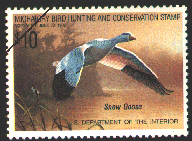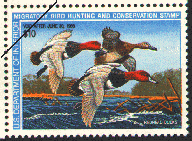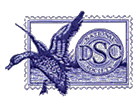Part 3: Appreciation
The Art of Collecting
What wise advice this is, especially for duck stamp collectors! Yet, how many of us truly take the time (or make the time) to enjoy and appreciate our collections? Not enough I’m sure. This appreciation aspect of collecting is what all the research, definition, acquisition and collecting is all about. It is the process by which we enjoy the “fruits” of our labor. When was the last time you pulled your collection out, just to page through and admire it? If there is anything at all you’ll do after reading this article, promise me this: you will set aside one precious solitary undisturbed hour sometime soon, and you will pull your federal duck stamp collection out. Slowly and methodically, starting from the beginning, whether it contains six or all 66 — look at, absorb, study, magnify, enjoy and smile at each and every stamp you own. There is so much you haven’t seen!! After all, the federal ducks are without question the best series of U.S. stamps ever designed and created. Each and every stamp was painted by a top-notch wildlife artist, then meticulously engraved to scale by a master craftsman, and after several generations of being saved and cherished, was ultimately purchased by you for your collection. How can you not appreciate them? The real “dividends” they pay can’t be measured in terms of dollars but more in terms of sense — a sense of accomplishment, a sense of satisfaction, a sense of beauty, a sense of wonder, a sense of history.
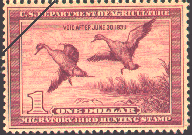
On the mono-color issues, note how well each detail is engraved and how the artistic series of bold and soft lines, dots, and dashes merge into a delicate completion of design. As you progress through the series, notice the increased complexity of design and background. You will see the expansion of the bird's size and detail and the trend of the duck blending with the habitat. Enjoy the intricate patterns and designs in the frames and borders of each stamp and how the lettering and typography changes through the years.
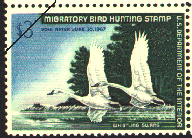
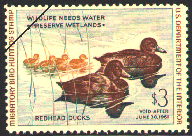
As you reach the mid-1960's and the early multi-color issues, note how they are actually separate color engraved fields that are mapped out on the design. As the years pass by and printing techniques improved, you quickly start to see the blending of colors, engraving and added offset color with some fine inter-weaving of the engravings at times. You note under magnification how the registration of these colors can vary greatly, and how they affect the image and presentation. Compare the prominence and size of the birds and backgrounds in the 1980s issues with those of the 1940s or 1950s and you will realize more fully the growth and evolution of this wonderful series of stamps.
